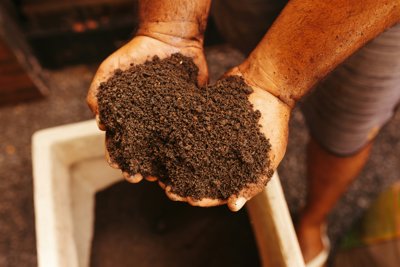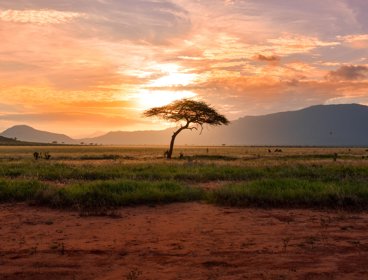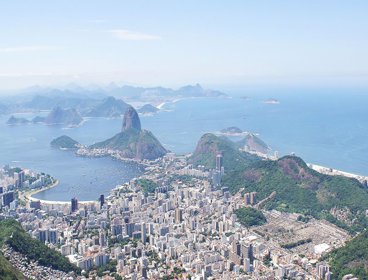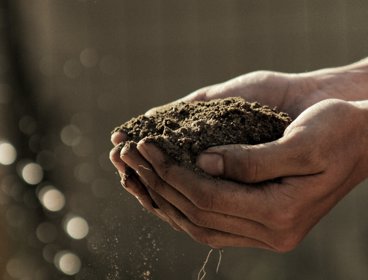November 2017
World Soil Day, Tuesday 5 December, 2017
Although it may often be only a few centimetres in depth, soil is one of the most essential resources on earth. It is a vital part of the natural environment, providing essential ecosystem services that regulate water, carbon, and climate. However, as global population increases the demands on land, especially its role in the food supply chain, are growing. This poses global challenges that the sustainable development goals are aiming to improve. More particularly, through goal number 15 which aims to ‘sustainably manage forests, combat desertification, halt and reverse land degradation, halt biodiversity loss’ by 2030. This resource explores these issues through the case study of the Cerrado biome in Brazil.
Where is the Cerrado ecosystem and why is it special?
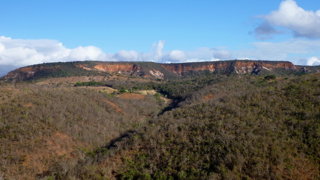
Cerrado area © A.Duarte, Flickr http://bit.ly/2Bb0xXI
Brazil is home to the largest tracts of tropical vegetation in the world, which means it harbours high levels of biodiversity and carbon too. Over many years the effects of deforestation to these landscapes – and more particularly, The Amazon Rainforest – have been well documented. But within Brazil, there is another special, unique ecosystem that is under threat too – The Cerrado.
The Cerrado ecosystem is South America’s largest tropical dry forest. It covers 20% of Brazil, that’s nearly 2 million KM squares, and is Brazil’s second most extensive biome. It is sometimes referred to as “the upside down forest” because up to 70% of its biomass – its plants - are to be found beneath the surface underground. There is a huge system of branches and roots buried deep in the Cerrado’s soils which can reach water during long dry seasons and also help ensure the plants can survive regular forest fires.
Why is the Cerrado environment special?
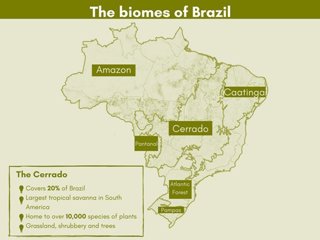
The Cerrado is a savanna biome, which consists of open grasslands, mixed shrubs, small trees and dry forest woodland. It is much drier than the Amazon. The mean annual precipitation is 1,800mm yr-1. The wet season is from October to April and the dry season is from May to September. Jaguars, giant anteaters, foxes and monkeys live in the Cerrado. In total 200 mammals, 600 bird species, 220 reptiles and 10,000 plant species call this landscape home. This makes it the most biologically diverse savanna on the planet.
Why is the Cerrado under threat?
Brazil has a population of nearly 210 million people and also supplies food fuel and fibre into the world market. This means, that there are additional demands to expand on Brazil’s agricultural area; putting pressure on landuse and the changes required to supply the both nation, and the world. According to the World Wildlife Foundation (2017), each year, clearing in the Cerrado is responsible for an estimated 250 million metric tons of carbon dioxide emissions. That is the equivalent to the annual emissions of 53 million cars.
The exploitation of the Amazon Rainforest has been well documented, particularly in terms of Soy and Beef farming, and polices have been put into place to reduce its exploration. However, there is a concern that these practices may be pushed in the Cerrado. In doing so, agricultural development may take place ‘virgin soil’ that has not yet been farmed, and could otherwise be protected. Although deforestation in Brazil as a whole has decreased, in the past ten years it has increased in The Cerrado.
Why is soil in danger?
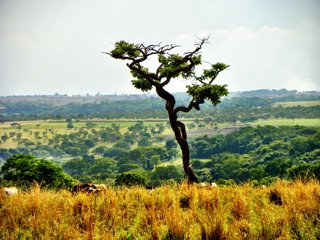
The soils in this special biome are highly weathered and acidic, as a result of geomorphological processes over the years. The soils are very deep (>3m), well drained, red, or yellow, clay rich. However they are but nutrient poor, which means in order to farm crops and livestock the soil requires fertilizers and extensive human interaction.
When previously undisturbed land is converted to pasture, it leads to issues such as soil degradation which can affects the hydrological processes of the carbon and water cycle, such as capacity for stream discharge and evapotranspiration. Some of South America’s most important rivers, such as the Amazon, originate in the Cerrado, when the land is converted this decreases the flow and can reduce rainfall which impacts on the extent of forest fires in such a dry landscape.
What can be done to protect the Cerrado?
In October 2017, 23 companies, such as Marks and Spencer, Lidl and Nestle, signed the Cerrado Manifesto to show their commitment to the region through good industry practices that put habitat conversation and biodiversity protection at the fore.
Key words
Savanna Biome
A terrestrial biome containing large areas of open space and grasslands, with occasional small trees and shrubs
Soil degradation
The physical, chemical and biological decline in soil quality
Stream discharge
The velocity of a stream of water to move
Tropical dry forest
In contrast to rainforests, tropical dry forests have to survive a long dry season each year, the deciduous trees shed their leaves to cope with this. When sunlight reaches the ground, it is therefore good for the forest floor.
Evapotranspiration
The sum of evaporation and transpiration.
Lesson plans
Get to know the Cerrado, by watching this video by WWF on YouTube (2015)
Ask pupils to watch the video and consider: what are five special things you have learnt about the Cerrado? How much vegetation has been stripped from the Cerrado? Why is the Cerrado called the upside down forest?
Watch the Cerrado deforestation available on The Guardian (2011) website
Describe what is happening to the Cerrado environment, what do the imaged depict?
(At 2.15 listen to the video and find out how the soil has been taken advantage of historically)
The carbon maps here that show historic, current or future carbon emissions associated with landuse, landuse change and forestry in Brazil. What is happening in Brazil? Take a look at carbon maps produced by geographers in 2017. What do the maps show?
As a homework task, ask pupils to resear ch and find one product that has been produced from the Cerrado (Soy, Beef etc). What have they found out? How would they promote to producers and consumers, the importance of the Cerrado and this special upside down forest. If time permits this activity can become a poster-making activity.
References
The miracle of the Cerrado, The Economist (2010)
The Importance of Being Cerrado: Brazil’s Other Huge, Endangered Ecosystem, Huffington Post (2010)
Environmentalists ask markets to help stop the destruction of the Cerrado, WWF (2017)
Saving the Cerrado, Brazil’s vital savanna, WWF (2017)
Secrets of the Brazilian Cerrado, Deutsche Welle (2017)
Companies chased away from Amazonian rainforests now destroying plains, The Guardian (2017)
Britain’s taste for cheap food that’s killing Brazil’s other wilderness, The Independent (2011)
Amazon rainforest’s final frontier under threat from oil and soya, The Guardian (2017)
23 Companies Sign Manifesto to Halt Destruction of Brazilian Cerrado, Sustainable Brands (2017)
Drone footage of the Brazilian Cerrado, WWF, YouTube (2016)
Mistry, J. and Beradi, A. (2001) World Savannas: Ecology and Human Use. Routledge: London.
